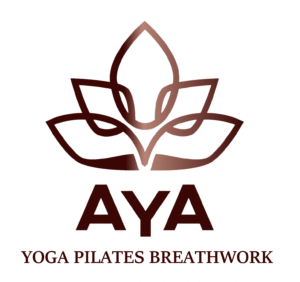What is breathwork?
“facilitate physical, mental and emotional healing”
Breathwork refers to any breathing exercise or technique. People often perform them to improve mental, physical, and spiritual well-being. During breathwork, you intentionally change your breathing pattern. Many forms of breathwork therapy involve breathing in a conscious and systematic way.
There are many variations on breathwork techniques, some are slow and calming, others are more intense and confronting. There’s no right or wrong – breathing is something we all have, and something we can control and benefit from the outcomes from that control.
History (Holotropic Breathwork)
Stanislav Grof, MD, and his late wife Christina developed holotropic breathwork at the Esalen Institute in Big Sur, California in the 1970s. The Grofs’ background was in psychoanalytic therapy (talk therapy that focuses on bringing suppressed thoughts or feelings to the conscious mind) and they explored how altered states of consciousness could affect traditional counseling or therapy. Through their experiments, they found that rapid or deep breathing caused by panic or anxiety could affect the brain positively.
The word ‘holotropic’ comes from the Greek words ‘holos’ or ‘whole’ and ‘trepein,’ which means ‘to move in the direction of something’. Together, this means ‘moving towards wholeness.’ Holotropic breathing uses rapid, controlled breathing patterns to promote a dream-like experience, or what’s usually referred to as an “altered state of consciousness.” Once you reach this state, it’s possible to access parts of your consciousness that are hard to reach.
The goal of holotropic breathwork is to essentially use accelerated breathing to increase awareness of the self as well as cope with traumas from the past. Holotropic breathwork allows you to access parts of your psyche that can’t be reached under normal conditions,”
Holotropic Breathwork is used to relieve mental health conditions and their symptoms, including:
- Depression.
- Substance use disorder.
- Post-traumatic stress disorder (PTSD).
- Anxiety.
- Negative thinking.
- Chronic stress.
- Tension.
- Avoidance behaviors
How we do breathwork at AYA:
The session begins with some Yin Yoga poses to relax you into the space, and open up your chest. Once you’re settled and comfortable, you’ll close your eyes and begin to breathe fast and deep in an even circular pattern. There are no pauses between inhales and exhales. While you’re doing this, feel free to make any movements or sounds that come naturally while continuing to keep your eyes closed. We also introduce some breath holds to intensify the experience. We typically do rapid breathing for about 30 minutes with up to 4 x breath holds that can last several minutes. We play south American music during the session to help you enter that altered state, and immerse you in traditional aromas such as Agua de florida, and palo santo.
Can you do breathwork alone?
Breathwork practices are usually done in group settings but they can also be done one-on-one. In a group, a trained facilitator(s) will oversee the session. Some people will breathe while facilitators guide and observe. The watchers are referred to as “sitters” and they’ll make sure that the “breathers” are comfortable and safe.
How does it feel to breathe like this?
During a breathwork practice, the most common experience is emotional release. This might include waves of sadness, bursts of anger or shaking from fear. With the release of emotion can come slow, quiet tears or heavy sobbing. The experience overall can either be an unnerving emotional roller coaster or extremely relaxing.
Can this be stressful for those who are living with trauma/anxiety?
It’s the opposite. This type of breathwork can help dissolve unresolved emotions stored in your mind and body.
As we grow up, we don’t always have the chance to develop the skillset needed to handle our feelings and emotions in healthy ways. And when feelings are not managed, they have a tendency to get suppressed in the body and can show up as muscle tension and burdens in the mind.
Breathwork gives people the opportunity to experience relief without conversation and because of that, it can be very helpful and healing for those who are living with trauma and anxiety.
What are the benefits of breathing
Some benefits of breathing can include:
- Promoting the release of toxins from your bloodstream and tissue.
- Lowering blood pressure by increasing circulation.
- Boosting your immune system.
- Improving digestion by reducing stress on your liver and kidneys.
- Reducing physical and emotional stress.
- Increasing mental clarity and creativity.
- Creating new neural pathways in your brain.
How can breathing affect the brain?
Scientists have discovered that the rhythm of breathwork creates electrical activity in the human brain that enhances emotional judgment and memory recall. Controlled breathing, when used to facilitate meditation, can cause a slight increase in brain size. The brain can also experience growth in areas that deal with attention and the processing of sensory input.
Should people who are living with certain health conditions avoid breathwork?
Since breathwork may bring up intense feelings or strong physical and emotional releases, we strongly suggest talking to your healthcare provider before practicing it. You’ll want to avoid this type of breathwork if you have a history of:
- Cardiovascular issues.
- High blood pressure.
- Recent injury or surgery.
- Any condition requiring regular medication.
- Panic attacks.
- Psychosis and seizure disorders.
Breathwork isn’t recommended for people who are pregnant or breastfeeding either.
